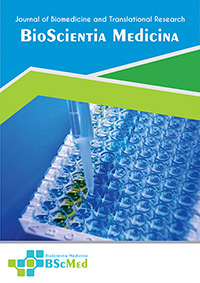Main Article Content
Abstract
Background The variable response to chemotherapy in non-small cell lung cancer (NSCLC) necessitates accessible biomarkers for prognostic stratification. The platelet-to-lymphocyte ratio (PLR), a marker of systemic inflammation, is a promising candidate. This study evaluates the predictive value of pre-treatment PLR for chemotherapy response in an Indonesian NSCLC cohort, a population underrepresented in biomarker research.
Methods: A retrospective cohort study was conducted on 59 adult patients with advanced-stage NSCLC at Dr. Mohammad Hoesin General Hospital, Palembang, Indonesia. Patients receiving first-line platinum-based chemotherapy were included. The association between baseline hematological markers and chemotherapy response (Partial Response [PR], Stable Disease [SD], Progressive Disease [PD]) was analyzed using the Kruskal-Wallis test, with Dunn's test for post-hoc comparisons. Receiver Operating Characteristic (ROC) curve analysis was used to determine the predictive accuracy and an optimal cut-off value for PLR.
Results: Statistically significant differences in median PLR were found across all response groups (p-value <0.0001). Post-hoc analysis confirmed a graded response, with the PLR of the PD group being significantly higher than that of both the SD and PR groups. ROC analysis demonstrated good predictive accuracy for PLR in discriminating responders (PR) from non-responders (SD+PD), yielding an Area Under the Curve (AUC) of 0.86. A PLR cut-off of 185 was identified, showing high sensitivity and specificity.
Conclusion: In this cohort, pre-treatment PLR was a statistically robust predictor of chemotherapy response, with a clear dose-response relationship and good predictive accuracy. PLR reflects the crucial balance between tumor-driven inflammation and host immunity, and its elevation signals a biological state that is resistant to standard chemotherapy. This simple, inexpensive biomarker holds considerable potential as a component of a multi-faceted prognostic model for NSCLC.
Keywords
Article Details
As our aim is to disseminate original research article, hence the publishing right is a necessary one. The publishing right is needed in order to reach the agreement between the author and publisher. As the journal is fully open access, the authors will sign an exclusive license agreement.
The authors have the right to:
- Share their article in the same ways permitted to third parties under the relevant user license.
- Retain copyright, patent, trademark and other intellectual property rights including research data.
- Proper attribution and credit for the published work.
For the open access article, the publisher is granted to the following right.
- The non-exclusive right to publish the article and grant right to others.
- For the published article, the publisher applied for the Creative Commons Attribution-NonCommercial-ShareAlike 4.0 International License.





